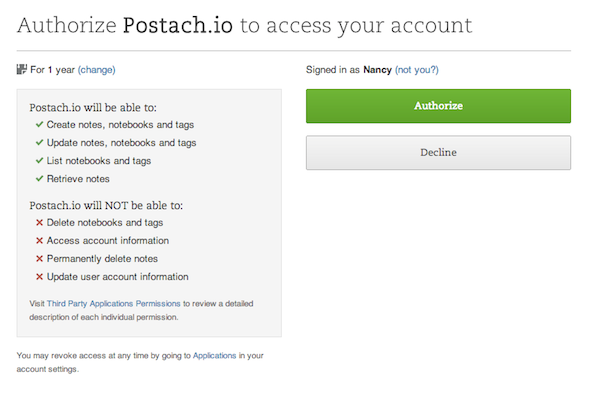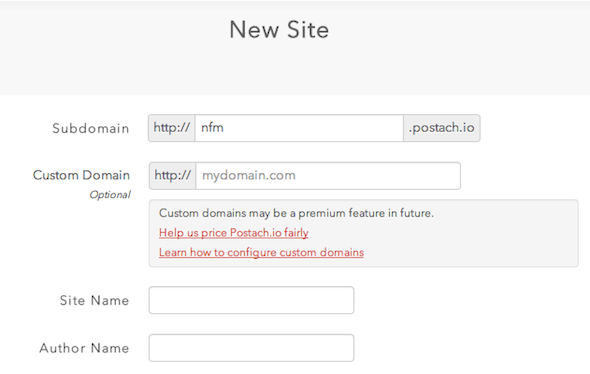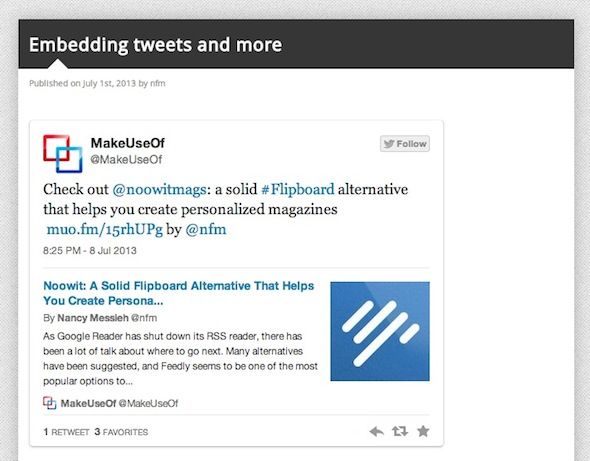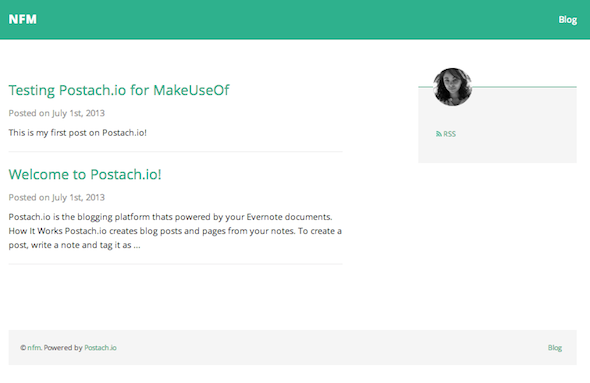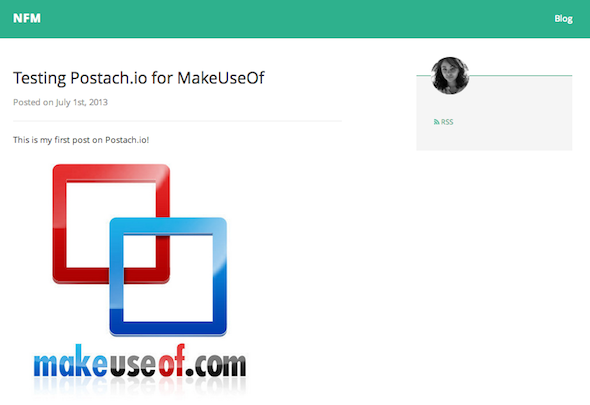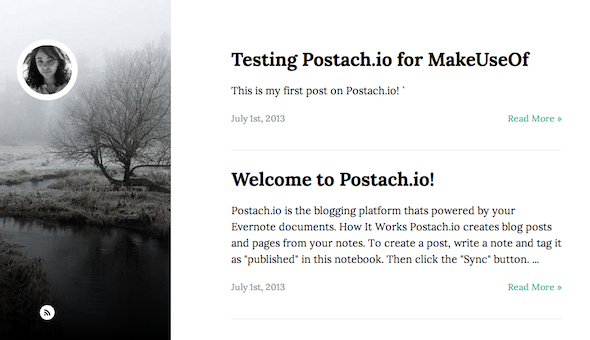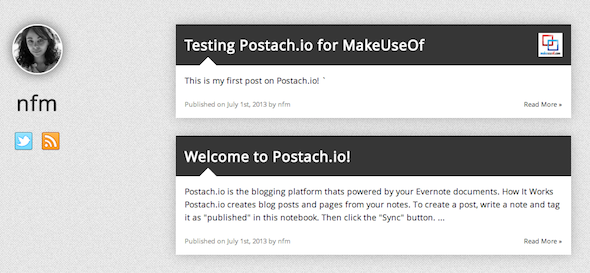There is certainly no shortage of blogging platforms available to users for free. WordPress and Tumblr alone are a great way to keep a blog, but there are a few creative alternatives out there, like using Dropbox to power a blog. A new blogging service Postach.io can now be added to the mix. The easy-to-use blogging platform allows users to create a blog in minutes, powered by the versatile note-taking app, Evernote. We've already listed quite a few creative ways Evernote can be used outside of the box, and now you can add blogging to that list.
When you first sign up for a free account, Postach.io will prompt you to authorize your Evernote account. By connecting your account, you are allowing Postach.io to create and update notes, notebooks, and tags, list notebooks and tags, and retrieve notes. Postacho.io will not be able to delete notebooks and tags, permanently delete notes, access your account information, or update your account user information.
The next step will be to create your blog. While Postach.io is in public beta, users are limited to creating just one site, but once the service officially launches, this will change.
When creating a blog, all you need is to select a subdomain and choose a site name and author name. Other optional features include using a custom domain (a feature which will likely turn premium later down the line), connect your blog to your Google Analytics and Disqus accounts, so you can track traffic and allow visitors to leave comments on your blog, and you also have the option to use Markdown to format your blog posts, but more on that later.
When you create your blog, you can also have Postach.io automatically create an Evernote notebook where all your posts will be saved, or you can choose an existing notebook.
Once that's done, you'll find a note within your Postach.io notebook with some tips on how to use the service, and that will also appear as your first blog post. Before getting to creating posts, there are several settings you can adjust by hitting the edit button. Here you can set your blog to auto-post to Facebook and Twitter, choose how many posts will appear on the page and choose which tags are used to publish posts and pages. You can also connect Postach.io to your Tumblr account to automatically import your Tumblr posts to your Evernote-powered blog.
You don't have to keep your Postach.io posts simple, with the service making it possible to embed YouTube and Vimeo videos, embed Tweets, Instagram images, your About.me profile, and there's lots more to come. To find out how to embed rich media in your Evernote-powered blog, and see which services are still in the pipeline, check out their guide here.
To find out how to embed audio files from Evernote (meaning you can use Postach.io to share podcasts), check out this blog post. We did, however, have a bit of trouble with this feature. While the blog post does offer the caveat that you may have to reapply your theme in order for audio posts to work. Even after reapplying our theme, while we could see the audio player, the file itself would not play. (Video on the other hand was a breeze to embed and play)
In addition to embedding all sorts of media, you can also add your Twitter, Facebook, Google+ and LinkedIn profiles to appear on your blog.
To create your first post, all you have to do is create a new note. The title of the note will be the title of your post, while the body of the note is the body of your post. In order to publish the note as a blog post, simply tag it 'published,' (the default tag can be changed in settings) and it will appear on your blog. If you want to create a page, the process is identical, but in addition to the 'published' tag, you also have to add a 'page' tag for it to be classified as a page. Be sure to hit the 'sync' button after you've created and tagged your notes so that they appear on your blog.
If you want to make any changes to your blog post, simply edit the existing note, and once again hit the 'sync' button.
If you want to remove a blog post, there are two ways you can go about this. You can either simply delete the note, or remove the 'published' tag from the note and hit the sync button.
Your blog home page will feature a list of your latest posts, including a teaser of the first two or three sentences from your posts. The sidebar features your profile photo (powered by Gravatar) and a link to the RSS feed to your blog.
You can embed any kind of media that can be added to an Evernote note - images and audio files. Items clipped from the web, however, do not appear in blog posts and will appear simply as a link in your post.
When it comes to formatting blog posts Postach.io recommends using Evernote's browser version as it gives users more formatting options; however you even blog on the go using Evernote's mobile apps.
You can also format your notes using Markdown, a method that is also used to create blogs powered by Dropbox, but in all honesty, using the Evernote interface is just far easier. You can create posts using HTML, as Postach.io supports basic HTML elements and styles.
If you're not a fan of the default theme, you'll be happy to know there are 11 themes to choose from, allowing you to create a pretty slick blog, using nothing more than a free Evernote account.
When you add your social media profiles, they're displayed differently depending on your theme:
Postach.io isn't without its kinks - after all it's in beta. The audio feature seems to need some work, and mobile support for themes is also another much needed update.
That said, if you're looking for a simple, easy-to-use blogging platform that you can take with you on the go, Postach.io is a great option. Of course, it does not compare to robust and popular blogging platforms like WordPress and Tumblr, but if your focus is more on the writing of posts and nothing more, this is a good choice. Google Analytics and Disqus support alone make it a solid option.
You can also take advantage of Evernote's features - including creating a collaborative blog.
What do you think of Postach.io? Worth a try or would you rather stick with a feature-rich option like WordPress or Tumblr? And while you're at it, be sure to check out our Evernote Manual available for download as a PDF, to give you a little bit more insight into the service.


